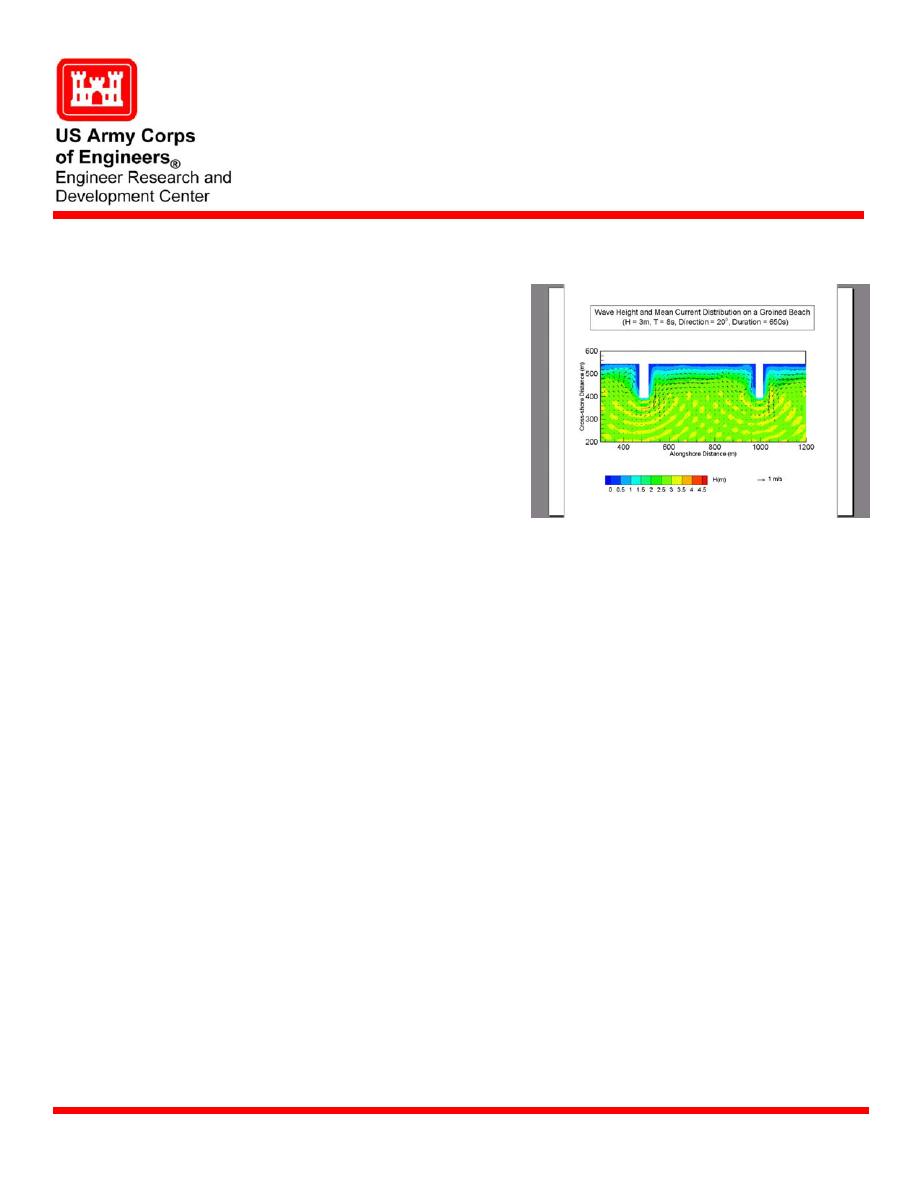
Boussineq Wave Modeling for
Structures, Harbors and Inlets
Description
BOUSS-2D is a comprehensive numerical model for simulating the propagation and
transformation of waves in coastal regions and harbors based on a time-domain solution of
Boussinesq-type equations. The
governing equations are uniformly
valid from deep to shallow water and
can simulate most of the phenomena
of interest in the nearshore zone and
harbor basins including shoaling/
refraction over variable topography,
reflection/diffraction near structures,
energy dissipation due to wave
breaking and bottom friction, cross-
spectral energy transfer due to
nonlinear wave-wave interactions,
breaking-induced longshore and rip
currents, wave-current interaction and
wave interaction with porous
2D map of mean currents generated using the
structures. Many processes at inlets
BOUSS-2D model
and harbors can be studied using
BOUSS-2D.
Benefits
BOUSS-2D can be applied to a wide variety of coastal and ocean engineering problems,
including complex wave transformation over small coastal regions (1-5 km), wave
breaking-induced nearshore circulation patterns, wave-current interaction near tidal inlets,
infra-gravity wave generation by groups of short waves, and wave transformation around
artificial islands.
BOUSS-2D: A Boussinesq Wave Model for Coastal Regions and Harbors,
Documentation
ERDC/CHL TR-01-25.
and Support
Application
Recent applications of the model include nearshore wave climate studies Ponce de Leon
Inlet, Florida, wave agitation studies for Barbers Point Harbor, Kahului Harbor, and
Kawaihae Harbor in Hawaii, wave effects in Brookings Harbor, Oregon, and wave-
induced circulation and shoreline erosion studies at the Saco Bay, Maine.
Point of Contact
Dr. Zeki Demirbilek, CEERD-HN-H, 3909 Halls Ferry Road, Vicksburg, MS 39180-
6199; email . Additional information can be found
at http://chl.erdc.usace.army.mil.
U.S. Army Engineer Research and Development Center
January 2005
Coastal and Hydraulics Laboratory (Product)
www.erdc.usace.army.mil



 Previous Page
Previous Page
